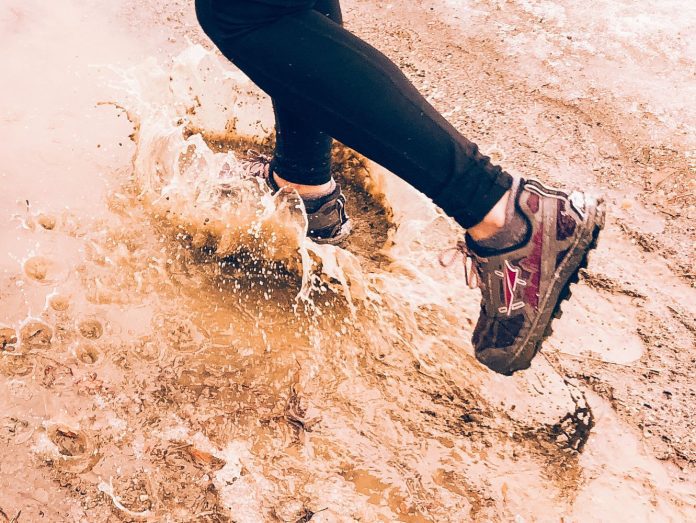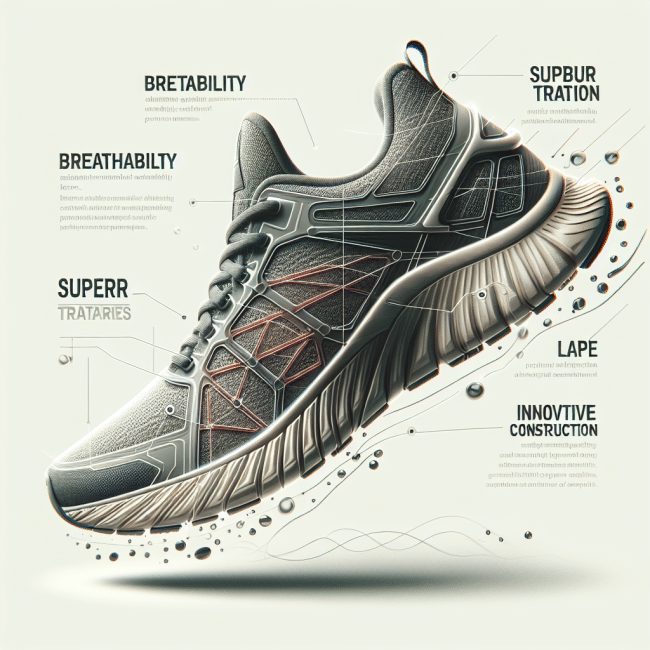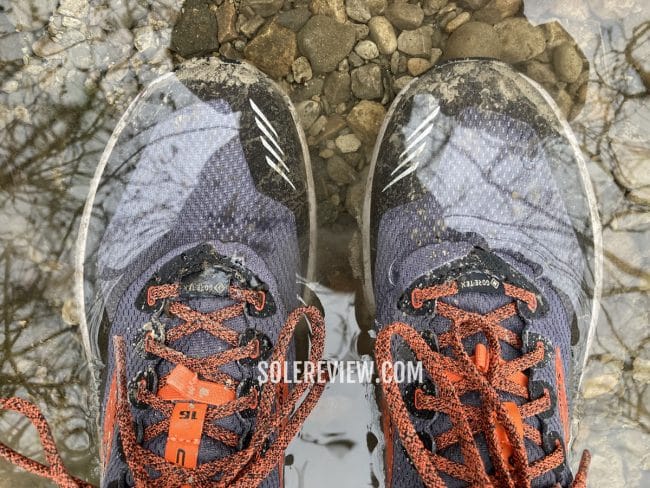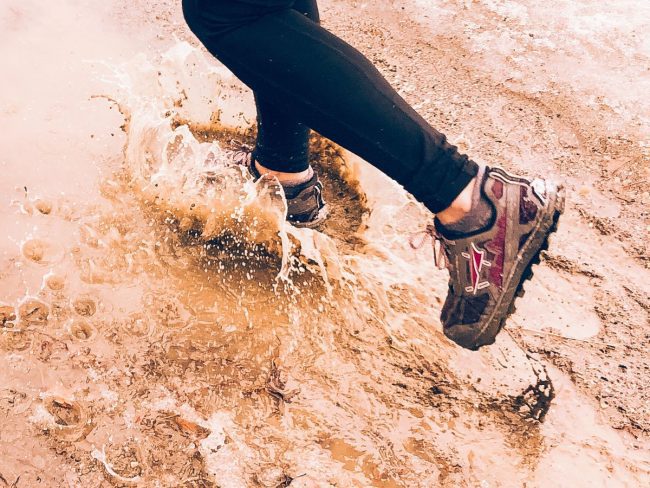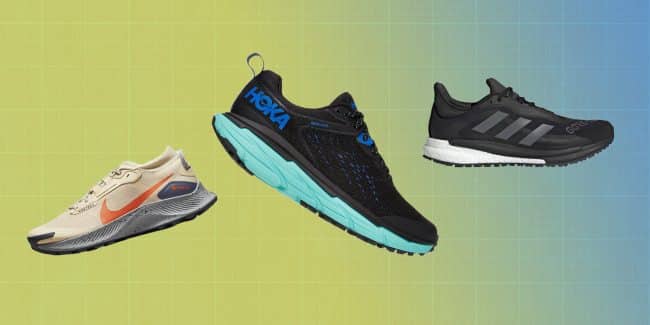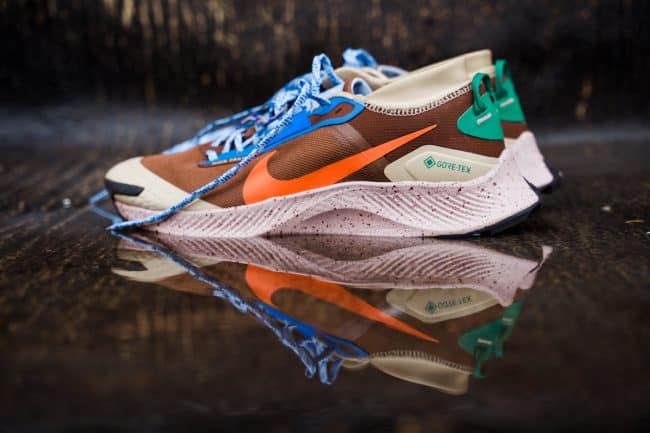When it comes to finding the perfect pair of waterproof running shoes, it can feel overwhelming with so many options available. However, understanding the key features that make a good waterproof running shoe can make all the difference in your comfort and performance. From water-resistant materials to proper drainage, this article will explore the essential aspects to look for in a quality waterproof running shoe.
Review contents
Material
Waterproof upper material:
When it comes to choosing a waterproof running shoe, one of the most important features to consider is the upper material. A good waterproof running shoe should have a durable and waterproof upper material that can withstand various weather conditions. This material is typically made of synthetic materials like nylon or polyester that are treated with a waterproof coating. This waterproof coating prevents water from entering the shoe and keeps your feet dry even during wet conditions.
Breathability:
While having a waterproof upper material is important, it should also be breathable to keep your feet comfortable and prevent them from overheating. Look for running shoes that have breathable membranes or mesh panels in the upper to allow air to circulate and keep your feet cool. Breathability is crucial, especially during intense workouts or long runs, as it helps to prevent the buildup of sweat and moisture inside the shoe, which can lead to discomfort and blisters.
Quick-drying properties:
In addition to being waterproof and breathable, a good waterproof running shoe should have quick-drying properties. This feature is particularly useful when you’re running in wet conditions or crossing through puddles. Quick-drying materials such as moisture-wicking fabrics or specialized coatings allow the shoe to dry faster, reducing the chances of discomfort and odor-causing bacteria growth. It’s important to choose a shoe that can efficiently wick away moisture, ensuring your feet stay dry and comfortable throughout your run.
Seam-sealed construction
Importance of seam-sealed construction:
Seam-sealed construction is a vital feature to consider when selecting a waterproof running shoe. It refers to the process of sealing the seams of the shoe to make them impervious to water penetration. Without proper seamless construction, water can seep through the stitched areas, compromising the shoe’s waterproof abilities. Seam-sealed construction ensures that every potential point of entry for water is properly sealed, providing excellent protection against rain, splashes, and wet terrains.
Seam-sealed vs. non-seam-sealed:
When comparing seam-sealed and non-seam-sealed shoes, the importance of seam-sealed construction becomes evident. Non-seam-sealed shoes may claim to be water-resistant, but they lack the extra step of sealing each individual seam, making them less reliable in wet conditions. If you plan to run in heavy rain or wet environments, a shoe with seam-sealed construction is a must to ensure your feet stay dry and comfortable.
Durable outsole
Grip and traction:
The outsole of a waterproof running shoe plays a crucial role in providing grip and traction on various surfaces, especially slippery ones. Look for shoes with outsoles made of high-quality rubber or synthetic compounds that offer excellent traction. These materials ensure that your shoes grip the ground securely, preventing slips and falls, no matter how wet or slippery the terrain may be. A good tread pattern with deep lugs will further enhance the traction, enabling you to confidently navigate different terrains.
Abrasion resistance:
Running shoes go through a lot of wear and tear, especially if you’re an avid runner. That’s why it’s important to choose a waterproof running shoe with a durable outsole that can withstand rough conditions. Look for shoes made with abrasion-resistant materials that can endure frequent use and resist damage from rough surfaces. A durable outsole will not only prolong the life of your shoes but also provide the necessary protection and stability for your feet.
Flexibility:
While durability and grip are important, a good waterproof running shoe should also offer flexibility. A flexible outsole allows for natural movement of your feet and a more efficient stride. It enables your feet to easily adapt to different terrains and provides a comfortable running experience. Look for shoes that strike a balance between durability and flexibility, ensuring that your feet are both protected and free to move naturally.
Cushioning and support
Impact absorption:
Cushioning is crucial in a running shoe to provide comfort and protect against the impact of each step. A good waterproof running shoe should have ample cushioning to absorb shocks and reduce the strain on your joints. Look for shoes with cushioning technologies like foam or gel inserts to provide excellent shock absorption. The right amount of cushioning will not only make your runs more comfortable but also help prevent injuries caused by repetitive impact.
Arch support:
Proper arch support is essential for those with low, medium, or high arches. A good waterproof running shoe should have adequate arch support to promote proper foot alignment and reduce the risk of discomfort or injury. Look for shoes that offer different levels of arch support or customizable insoles to cater to your specific needs. Whether you need a shoe with a built-in arch support or one that can accommodate custom orthotics, finding the right level of arch support is crucial for optimal comfort and performance.
Ankle support:
Ankle support is another factor to consider when choosing a waterproof running shoe. Look for shoes that offer adequate ankle support to prevent sprains and provide stability. Shoes with padded ankle collars or built-in ankle support technologies can help keep your ankle stable and reduce the risk of rolling or twisting. Proper ankle support is particularly important during trail running or uneven terrain, as it helps maintain your balance and prevents injuries.
This image is property of www.solereview.com.
Weight and flexibility
Lightweight design:
The weight of your running shoes can significantly impact your performance and overall comfort during a run. A good waterproof running shoe should have a lightweight design that doesn’t weigh you down. Lightweight shoes allow for quicker and more efficient movement, reducing the strain on your legs and enhancing your running experience. Look for shoes made with lightweight materials such as mesh or synthetic overlays that don’t compromise on durability or protection.
Flexibility for natural movement:
In addition to being lightweight, a good waterproof running shoe should provide flexibility for natural movement. Flexibility allows your feet to move and flex naturally, mimicking the motion of running barefoot. Look for shoes with flexible midsoles or outsoles that bend and twist with your foot as you run. Flexible shoes not only enhance the comfort of each stride but also help to prevent muscle imbalances or overcompensation that can lead to injuries.
Secure fit
Lacing system:
A secure fit is essential in a waterproof running shoe to prevent any movement or slippage inside the shoe while running. Look for shoes with a lacing system that allows you to customize the fit according to your foot shape and preferences. A well-designed lacing system ensures that your shoes stay snugly in place, providing stability and preventing blisters or hotspots. Experiment with different lacing techniques until you find the perfect fit that secures your foot comfortably.
Padded collar and tongue:
The collar and tongue of a waterproof running shoe should provide adequate padding to enhance comfort and support. Look for shoes with padded collars and tongues that cushion your foot and prevent any rubbing or irritation. The padding also helps to stabilize your foot and keep it centered within the shoe, reducing the risk of slipping or discomfort. A snug and cushioned collar and tongue will create a barrier between your foot and the shoe, ensuring a secure and comfortable fit.
Heel support:
Heel support is crucial in a waterproof running shoe to prevent any slippage and give you a stable running experience. Look for shoes that have a well-structured heel counter or heel support technologies to keep your heel securely in place. A firm and supportive heel not only prevents blisters and discomfort but also helps to maintain proper foot alignment during your runs. With the right heel support, you can confidently tackle any terrain without worrying about your foot sliding within the shoe.
This image is property of hips.hearstapps.com.
Reflective elements
Visibility in low-light conditions:
Running in low-light conditions can pose significant risks, especially if you’re not easily visible to others. Choosing a waterproof running shoe with reflective elements can greatly enhance your safety. Look for shoes that have reflective accents or patches that shine when exposed to light. These reflective elements make you more visible to motorists, cyclists, and other pedestrians, reducing the chances of accidents and ensuring a safer running experience. Whether you’re an early morning or late-night runner, reflective elements provide an added layer of visibility that can make a significant difference.
Breathable lining
Moisture management:
While the outer material of a waterproof running shoe focuses on keeping water out, the lining should be breathable and efficient in managing moisture. Look for shoes with moisture-wicking or quick-drying linings that keep your feet dry and comfortable. These linings help to wick away sweat and moisture, preventing the buildup of bacteria and odor. Good moisture management ensures that your feet stay fresh and dry, reducing the likelihood of blisters or discomfort during your runs.
This image is property of media-cldnry.s-nbcnews.com.
Easy maintenance
Cleaning and care instructions:
Proper maintenance is essential to keep your waterproof running shoes performing at their best. Look for shoes that come with clear cleaning and care instructions. These instructions will guide you on how to clean your shoes properly, what products to use, and how to maintain their waterproof properties. Following the manufacturer’s recommendations will help extend the life of your shoes and keep them in great condition. Regular cleaning and maintenance will ensure that your waterproof running shoes continue to provide the necessary protection and performance you require.
Price and value
Balancing cost and features:
Price is always a consideration when purchasing any product, including waterproof running shoes. While it’s natural to want the best value for your money, it’s important to strike a balance between cost and features. Consider what features are essential for your running needs and prioritize them accordingly. Look for waterproof running shoes that offer the necessary features you require while keeping within your budget. Remember, investing in a good pair of waterproof running shoes is an investment in your comfort and performance, so choose wisely to ensure you get the best value for your money.
This image is property of believeintherun.com.

